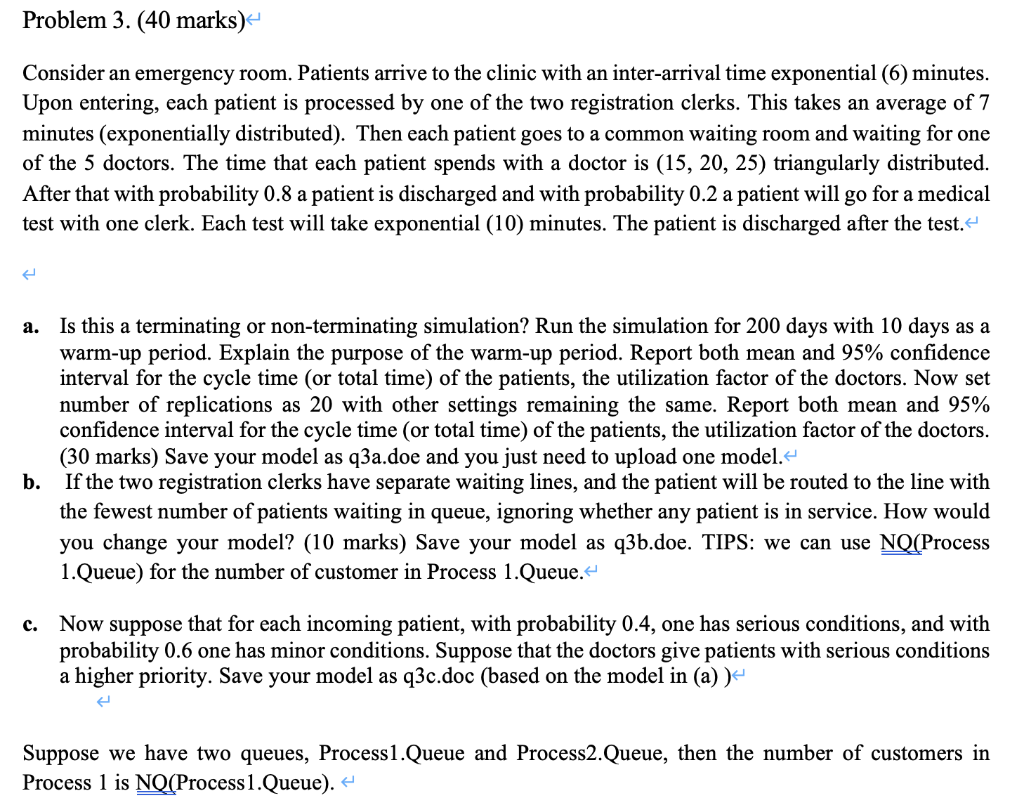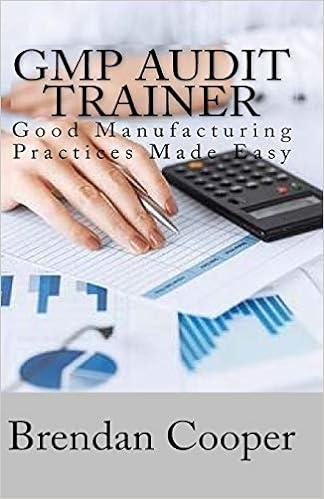
Consider an emergency room. Patients arrive to the clinic with an inter-arrival time exponential (6) minutes. Upon entering, each patient is processed by one of the two registration clerks. This takes an average of 7 minutes (exponentially distributed). Then each patient goes to a common waiting room and waiting for one of the 5 doctors. The time that each patient spends with a doctor is (15,20,25) triangularly distributed. After that with probability 0.8 a patient is discharged and with probability 0.2 a patient will go for a medical test with one clerk. Each test will take exponential (10) minutes. The patient is discharged after the test. a. Is this a terminating or non-terminating simulation? Run the simulation for 200 days with 10 days as a warm-up period. Explain the purpose of the warm-up period. Report both mean and 95% confidence interval for the cycle time (or total time) of the patients, the utilization factor of the doctors. Now set number of replications as 20 with other settings remaining the same. Report both mean and 95% confidence interval for the cycle time (or total time) of the patients, the utilization factor of the doctors. (30 marks) Save your model as q3a.doe and you just need to upload one model. b. If the two registration clerks have separate waiting lines, and the patient will be routed to the line with the fewest number of patients waiting in queue, ignoring whether any patient is in service. How would you change your model? (10 marks) Save your model as q3b.doe. TIPS: we can use NQ(Process 1.Queue) for the number of customer in Process 1.Queue. c. Now suppose that for each incoming patient, with probability 0.4, one has serious conditions, and with probability 0.6 one has minor conditions. Suppose that the doctors give patients with serious conditions a higher priority. Save your model as q3c.doc (based on the model in (a) ) Suppose we have two queues, Process1.Queue and Process2.Queue, then the number of customers in Process 1 is NQ(Process1.Queue). Consider an emergency room. Patients arrive to the clinic with an inter-arrival time exponential (6) minutes. Upon entering, each patient is processed by one of the two registration clerks. This takes an average of 7 minutes (exponentially distributed). Then each patient goes to a common waiting room and waiting for one of the 5 doctors. The time that each patient spends with a doctor is (15,20,25) triangularly distributed. After that with probability 0.8 a patient is discharged and with probability 0.2 a patient will go for a medical test with one clerk. Each test will take exponential (10) minutes. The patient is discharged after the test. a. Is this a terminating or non-terminating simulation? Run the simulation for 200 days with 10 days as a warm-up period. Explain the purpose of the warm-up period. Report both mean and 95% confidence interval for the cycle time (or total time) of the patients, the utilization factor of the doctors. Now set number of replications as 20 with other settings remaining the same. Report both mean and 95% confidence interval for the cycle time (or total time) of the patients, the utilization factor of the doctors. (30 marks) Save your model as q3a.doe and you just need to upload one model. b. If the two registration clerks have separate waiting lines, and the patient will be routed to the line with the fewest number of patients waiting in queue, ignoring whether any patient is in service. How would you change your model? (10 marks) Save your model as q3b.doe. TIPS: we can use NQ(Process 1.Queue) for the number of customer in Process 1.Queue. c. Now suppose that for each incoming patient, with probability 0.4, one has serious conditions, and with probability 0.6 one has minor conditions. Suppose that the doctors give patients with serious conditions a higher priority. Save your model as q3c.doc (based on the model in (a) ) Suppose we have two queues, Process1.Queue and Process2.Queue, then the number of customers in Process 1 is NQ(Process1.Queue)







